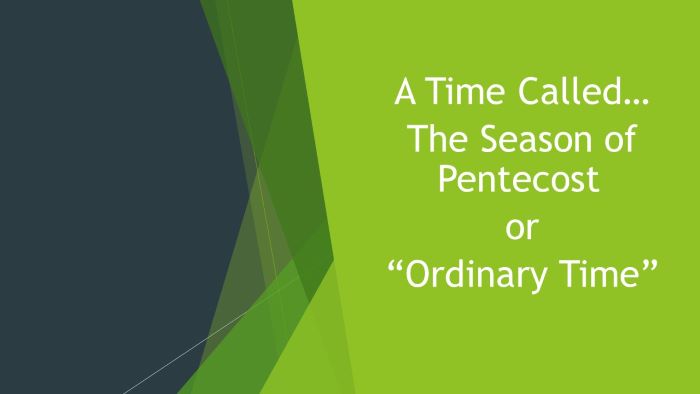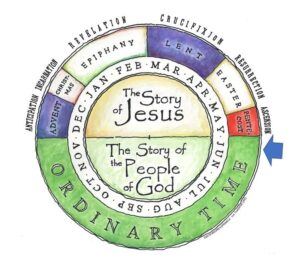A Time Called…Pentecost Season or “Ordinary Time”

What is better than an ordinary day?
An ordinary day lets you catch up on small tasks, or it gives you time to have a nap, or it gives you time to clear out the garage.
The season of Pentecost is both long and ordinary.
Historical Roots of Pentecost
The seasons of the Christian church are organized around two major celebrations – Christmas and Easter. The long period of time (33 or 34 Sundays) between Pentecost Sunday and Advent have long been referred to as Pentecost Season or Ordinary Time.
The original meaning of Ordinary Time seems not to have the meaning of mundane or common. Rather, it meant “counted time” – the time counted between Pentecost and Advent. Traditionally, this time focused on the mission of the church to the world.
Finding Meaning in the Tradition
Sometimes church leaders jokingly say that the long stretch of time from Pentecost Sunday in the Spring to Advent in the fall contains all the parts of the church year left over after everything
else has been accounted for. It is a time for growth. Hence, the colour green. In the Old
Testament, the Hebrew word for “green” also means “young.”
Pentecost season is a time for doing ordinary things – teaching the young, growing, learning, experimenting, changing, thinking.
This long season is a time to reflect on how to live under the guidance of God’s Spirit.
The season of Pentecost (Ordinary Time) focuses on hearing and using God’s teachings to shape our own actions as a Church in the world. The season starts with Trinity Sunday on the first Sunday after Pentecost. It then continues through the summer and fall months, through the newer Season of Creation, and to the end of the church year, Reign of Christ Sunday, after which we start the cycle again with the first Sunday of Advent.
Categories: General News, Worship

You must be logged in to post a comment.